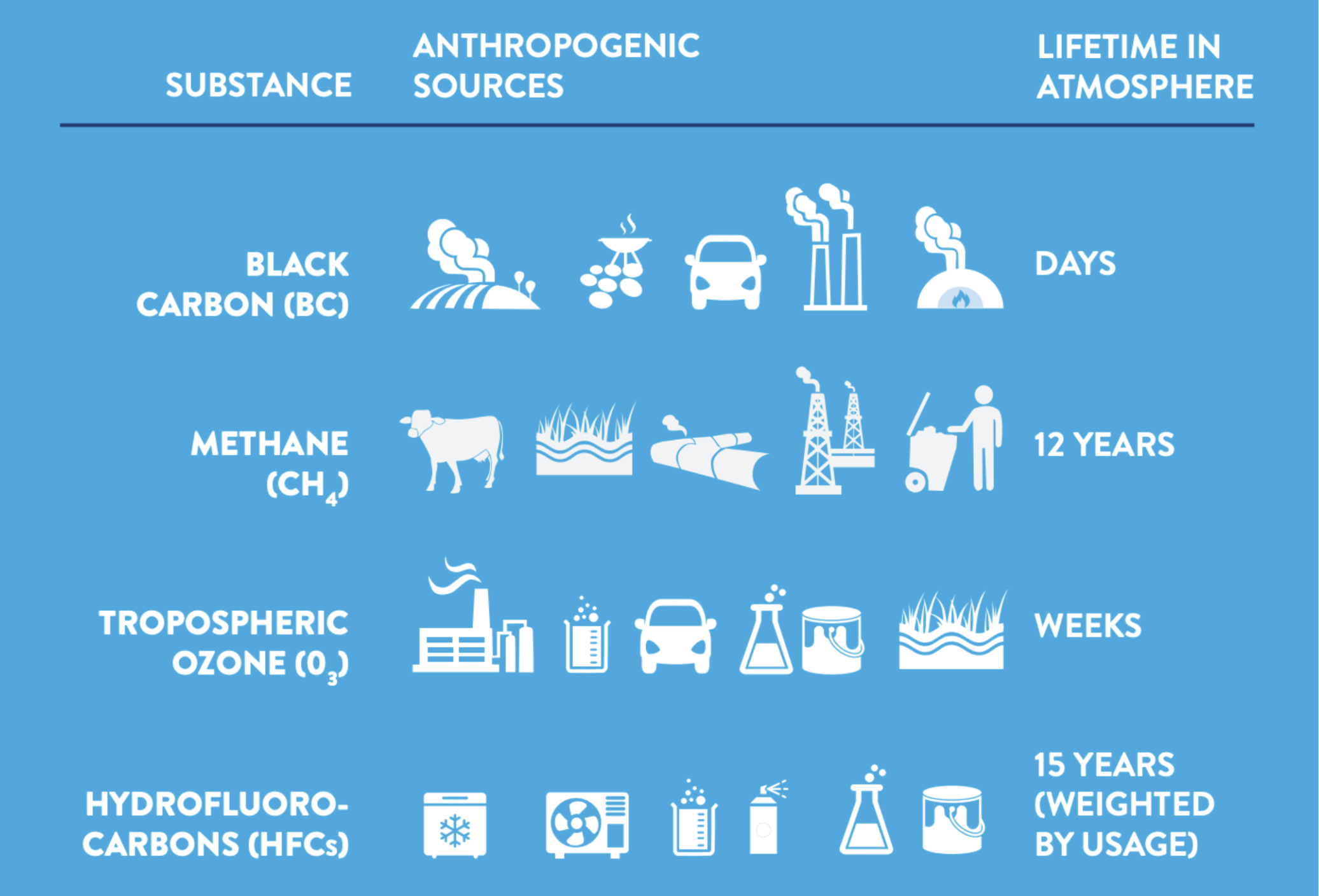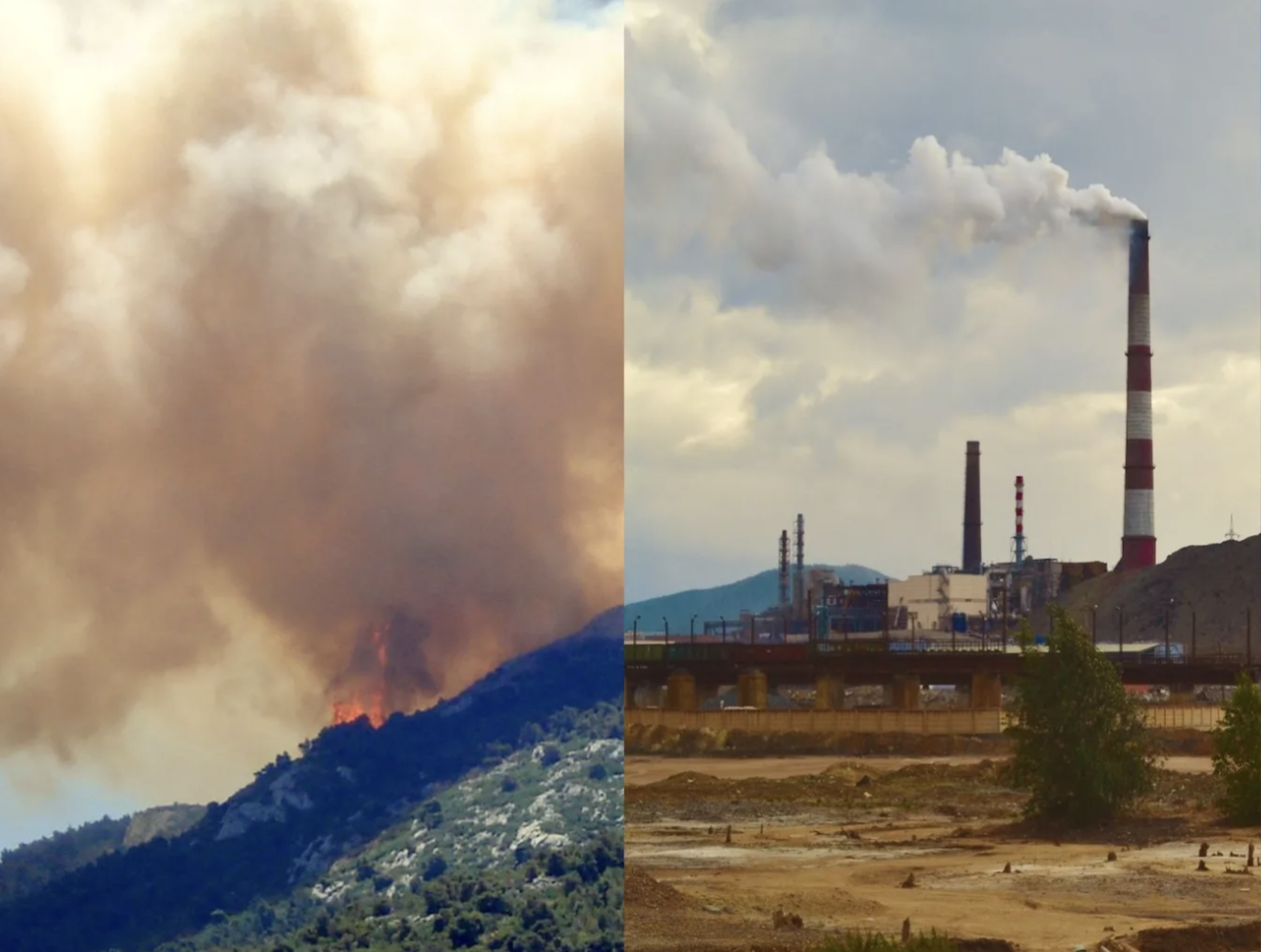Addressing Long-Overlooked Short-Lived Climate Pollutants
National track teams bring both marathoners and sprinters to maximize their chances of winning gold medals at the Olympics. These athletes bring different skills to achieve their respective goals and, together, they ensure the success of the team. To win the race against climate change, we must do the same.
Since the onset of the Industrial Revolution in 1750, non-CO2 greenhouse gases (GHGs) and black carbon have contributed almost as much as CO2 to overall radiative forcing (RF) – a measure of the change in Earth’s energy balance that results in global warming. Non-CO2 GHGs have made an RF contribution of 2.10 W/m2, not far from the 2.16 W/m2 due to CO2. Therefore, to halt global warming, we must look beyond CO2 and address long-neglected contributors to climate change. Short-lived climate pollutants (SLCPs) should be at the top of our agenda.
SLCPs have a very short atmospheric lifetime, from a few days to 15 years. They include GHGs like methane and hydrofluorocarbons (HFCs) as well as air pollutants like black carbon and tropospheric ozone (or ground-level ozone). Their short lifetime contrasts with that of CO2, which largely remains in the atmosphere for thousands of years after it’s emitted. While SLCPs don’t linger in the atmosphere for as long, they are very potent. For example, over a 20-year time horizon, methane is 80 times more potent and HFCs are thousands of times more potent than CO2 on a ton-for-ton basis.
Given their short lifespans and high potency, cutting SLCP emissions can promptly reduce global warming. Because they break down in the atmosphere faster than they are released, just reducing the rate of their emissions can lead to reductions in warming in the near term, even if emissions are net positive. And slowing near-term warming might just be what we need to do.

We are on the brink of crossing the 1.5 °C warming threshold set by the Paris Agreement. In fact, we may even be past it. The Institute for Governance & Sustainable Development (IGSD) calculated the 2023 global average temperature to be 1.44 °C, while Berkeley Earth found it to be 1.54 °C. Exceeding the Paris Agreement target, or going into climate overshoot, can significantly exacerbate climate impacts, including effects on human health, food security, and rising sea levels, and make it nearly impossible to reverse such effects.
While the decarbonization efforts underway to reach net zero CO2 emissions by 2050 are fundamental, they will not slow down near-term warming. In fact, they may even accelerate it. The reason lies within the dynamics between the GHGs and aerosol air pollutants coemitted during fossil fuel combustion, which is the primary source of global CO2 emissions and the focus of current decarbonization efforts. While GHGs such as CO2 and methane warm the atmosphere, some aerosols cool the atmosphere by reflecting incoming solar radiation back into space, masking about 0.5 °C of warming. As we stop burning fossil fuels, the CO2 we have emitted thus far will persist in the atmosphere for centuries or thousands of years, while the cooling aerosols will leave the atmosphere after 3 to 5 days. Therefore, while phasing out fossil fuels is critical in the long term, it can lead to accelerated warming in the near term as we lose the cooling effect of aerosols.

By relying only on decarbonization targeting the phaseout of fossil fuels, we risk triggering looming tipping points, which are critical thresholds that, when crossed, will lead to irreversible and potentially catastrophic changes in our climate system.
To avoid crossing irreversible tipping points and stay within the Paris Agreement warming boundaries, we need a dual strategy:
The Sprint to 2030: cut emissions of short-lived climate pollutants (SLCPs)
The Marathon to 2050: long-term decarbonization
The latest science confirms that adopting a dual approach to near- and long-term emissions mitigation significantly reduces the risk of climate overshoot.
Winning the sprint to reduce near-term warming is also fundamental to build climate resilience and ensure climate justice. Many communities in developing countries and historically marginalized communities are experiencing the earliest and worst effects of climate change, despite having contributed the least to the climate crisis. Climate justice inherently recognizes the need for speed in addressing near-term global warming, to avoid catastrophic events that will affect frontline communities first. By cutting SLCP emissions, we can buy time for these and all communities to adapt to climate change.
The Carbon Containment Lab has embraced this bifocal vision, recognizing the urgency to address both near- and long-term GHG emissions. We have codified this vision into two quantitative objectives for our activities:
Helping to contain 100 million tons of CO2e by 2030 (based on 20-year Global Warming Potential, GWP20, which more accurately reflects the impact of near-term mitigation strategies)
Helping to contain 1 billion tons of CO2e by 2050 (based on 100-year Global Warming Potential, GWP100)
The good news is that, while SLCP solutions are mostly undervalued, they are readily available. For HFC emissions, tackling refrigerant venting and stimulating the transition to low-GWP alternatives are immediate mitigation solutions. For methane emissions, there are several mitigation pathways, ranging from improved livestock feeding strategies to leak detection and repair at oil and gas wells. For tropospheric ozone, formed by the interaction of sunlight with compounds like methane, cutting precursor emissions will reduce its presence in the atmosphere. For black carbon, a component of fine particulate air pollution (PM2.5), air pollution reduction measures such as vehicle standards and the transition to clean vehicles are effective solutions.
Addressing SLCPs is the lowest hanging fruit to limit climate damages and is key to achieving our long-term climate goals.
As we strengthen our endurance for the decarbonization marathon, we must increase our explosivity for the sprint to cut SLCPs by 2030.
